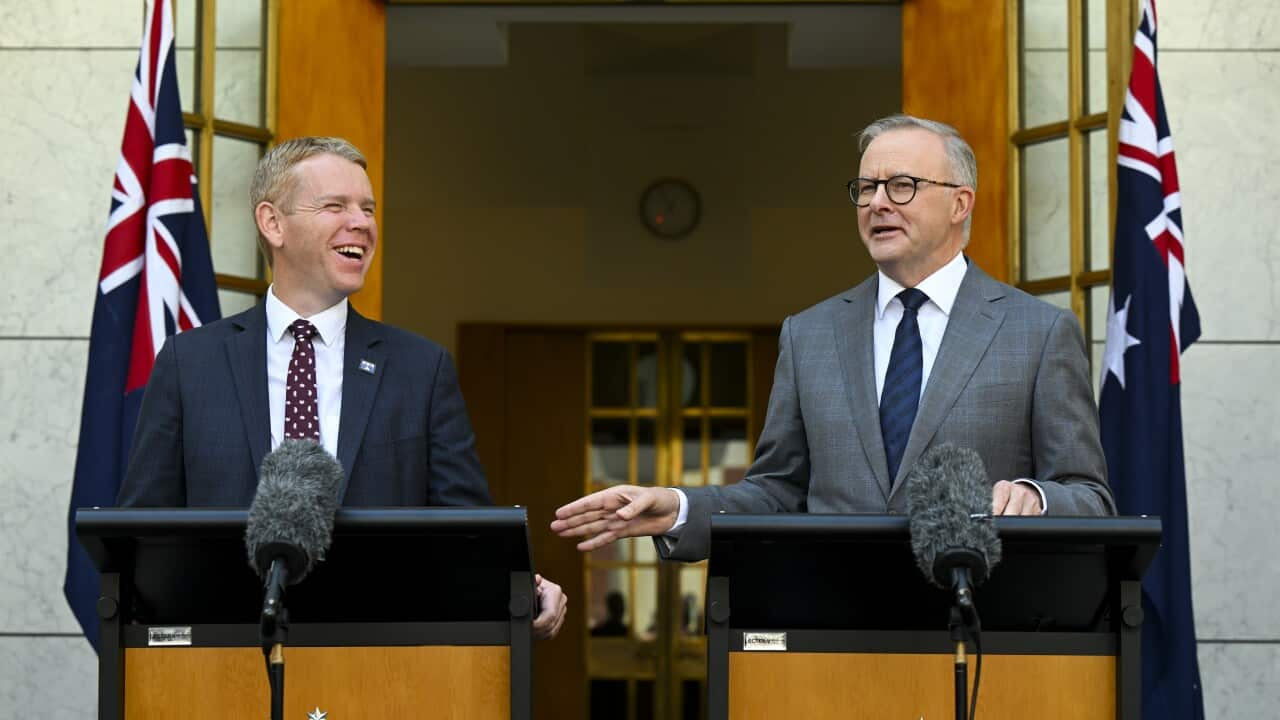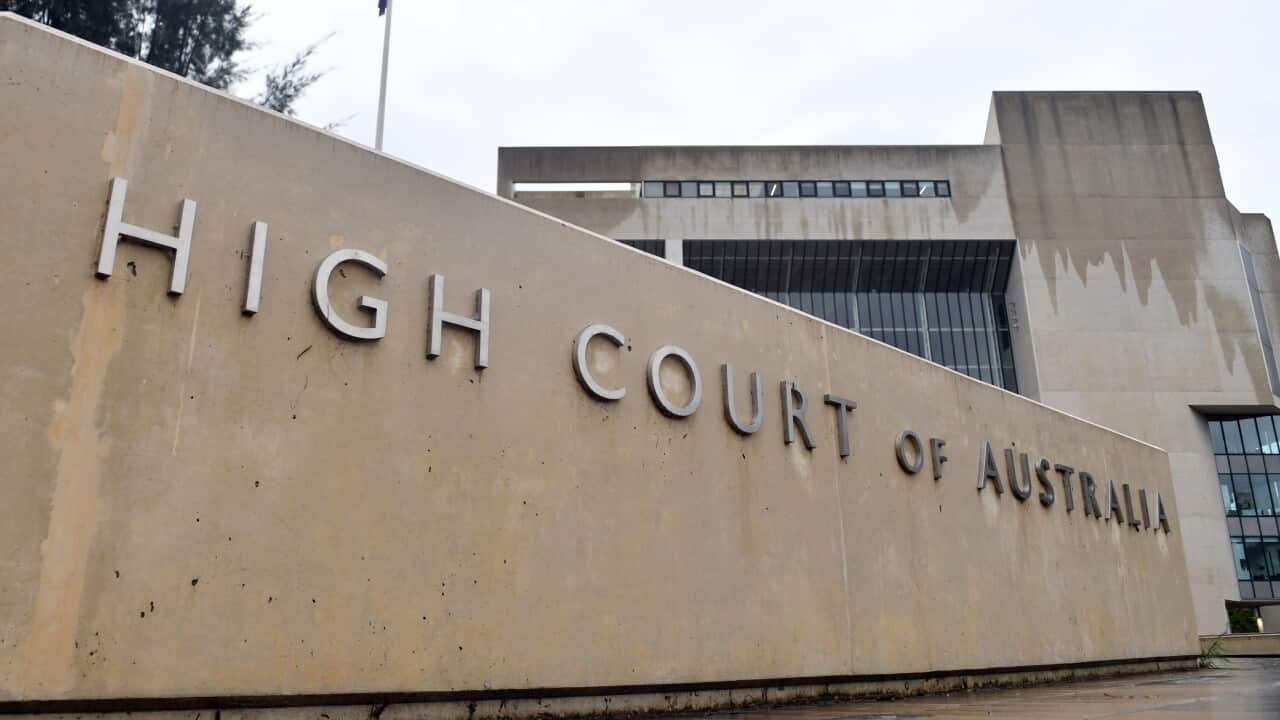Key Points
- Home Affairs Minister Clare O'Neil has released a review of Australia's immigration system.
- The review suggests 32 "possible reform directions" but makes no hard recommendations.
- Fewer visa types, raising the income threshold and changing the points test are some of the suggestions.
A long-awaited review into Australia's migration system has landed, calling for a root-and-branch overhaul of the way it assesses potential citizens.
, released by Home Affairs Minister Clare O'Neil on Thursday, warns the system is "not fit for purpose" and is riddled with vulnerabilities ripe for exploitation.
"The objectives of the program are unclear, and successive governments and policymakers have responded to challenges through piecemeal reforms which have not addressed fundamental underlying issues," it says.

Australia is failing to hold onto international students after they graduate, which is detrimental to our economy, the review found. Source: SBS News
But it makes no hard recommendations, instead suggesting 32 "possible reform directions" for the government to explore.
In a speech to the National Press Club as the review was released, Ms O'Neil confirmed two concrete changes and flagged a number more are likely to happen soon.
Here are five key takeaways.
Labor raises the income threshold
In her major announcement, Ms O'Neil revealed Labor will raise the minimum salary an immigrant needs to receive sponsorship from an employer from 1 July.
The Temporary Skilled Migration Income Threshold (TSMIT), which has not been raised since it was frozen at $53,000 a decade ago, will jump to $70,000, where it would have been without the freeze.
“That means every year for the past decade a growing share of workers entering Australia on skilled visas are being funnelled into low-wage jobs,” Ms O'Neil said.
"This [the threshold increase] is a big deal. [It is] essential to ensuring this program is what it says it is: a skilled worker program, not a guest worker program.
"The Grattan Institute calls this 'The Goldilocks threshold'. It is just about right ... A lot of skilled workers coming to our country are quite a bit younger, and what it will inevitably do if we set the rate too high is exclude [them]."
The review had warned the TSMIT "no longer serves its intended purpose and should be updated", while the occupation lists available are also out of date, and do not reflect the modern economy, it found.
Pathway to permanent residency

Labor has also announced an eased pathway to permanent residency for New Zealanders. Source: AAP / Lukas Coch
Ms O'Neil said the move, which will come into effect by the end of the year, would make applications for permanency more competitive.
"[But] it does not mean more people," she stressed.
"It simply means a group of temporary workers who have been denied even the opportunity to apply for permanent residency will be able to do so."
Temporary migration has doubled since 2007, with 2.1 million temporary migrants currently in Australia.
Three new lanes for migration
Labor wants a root and branch overhaul of immigration, splitting the system into three tiers.
While the finer details will be worked through with unions and businesses, broadly the move would take different approaches to applicants depending on their salary and skillset.
The first — a 'light touch' tier — will be a streamlined lane for high-earning workers. It'll be designed for fast turnarounds on highly-skilled worker visas, in a bid to end long wait times hampering Australia's efforts to fill skills shortages.
"[It] is a pathway which is fast and simple for the specialised highly-skilled workers we need to drive innovation in our economy. It helps build jobs for the future," Ms O'Neil said.
The second - a mainstream skilled pathway - will focus on middle-income earners, which is where the new salary threshold could be most keenly felt.
"[It] would focus on proper assessment of labour shortages, rather than the current outdated approaches everyone agrees are not working," Ms O'Neil said.
The third - for essential industries - will revamp Australia's intake of low-earning migrants, which could have big implications for under-pressure sectors such as aged care.
"One of the reasons there is so much exploitation in Australia is because we have allowed low-wage migration programs to operate in the shadows," Ms O'Neil said.
It's not clear exactly when the new system will be in place, but the government insists it's working as quickly as possible to implement it.
Fewer visa types
"Our system is crazily slow and complex," Ms O'Neil said.
"These problems are more than just an irritation. Remember that other developed countries are competing for the same migrants that we really need."
Ms O'Neil flagged an intention to trim down the over 100 Australian visa and visa subclasses, so granular that they include a specific visa for superyachts.
"It is a mess ... so complicated that if I drew you a diagram it would look like a tangled bowl of spaghetti," she said.
Mr Parkison said it's exacerbated by growing international competition for skilled workers, who are no longer limited to traditionally attractive countries such as Australia and Canada.
One visa that potentially could be cut is the Significant Investor Provisional Visa, dubbed the golden ticket visa, which allows people who invest at least $5 million into Australia to remain in the country for up to five years, ultimately paving the way for a permanent residency application.
"We think that some of these classes have not achieved their objective. They have essentially been a backdoor way for people to come in and make investments in low productivity areas of little value to the community, and get a visa in the process," Mr Parkinson said.
Keeping talented students
The review found international students should be an "important source" of skilled migration, but Australia is failing to hold onto the brightest.
"Australia is letting too many former students become ‘permanently temporary’ by not identifying those with the greatest potential for success," it said.
International students currently can't apply for a graduate visa until after they've graduated. With waiting times of up to eight months and no guarantee of an employer or a long-term visa, they're often forced to work low-skilled jobs in the interim.
Temporary visas they can get are often shorter than the time needed to have their qualifications transferred and recognised, Mr Parkinson said.
"We actually give visas for probably longer than most other countries. But if you're an employer, you don't know that [they will receive a visa]. The graduates therefore get stuck in these low-skilled jobs, because they can't actually get into the areas where they've been trained," he said.
One suggested solution is an immediate graduate visa, though the review concedes that "may not fully address the underlying reason many struggle to transition".
Changing the points tests
The review suggests a "recalibration" of Australia's points system to select migrants likely to make the "greatest long-term economic contribution".
"The panel is concerned that the current test is not sufficiently calibrated to effectively distinguish between candidates. As currently structured it appears to differentiate on factors likely to be poor indicators of success in the labour market," it says.
Mr Parkinson was blunter, warning the tests are "not picking out those most likely to succeed".
He said that "almost everyone" fulfils most requirements outlined, meaning a select and irrelevant group of criteria determine an applicant's success, like whether they had studied or worked in regional Australia.
"For the life of me, I can't see how they necessarily are the determinants of long-term success for Australia."













